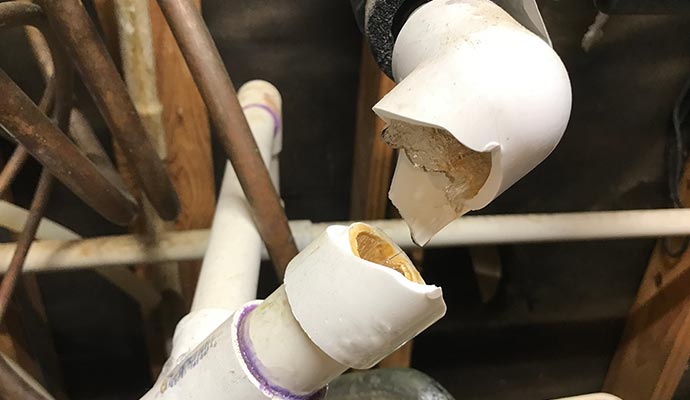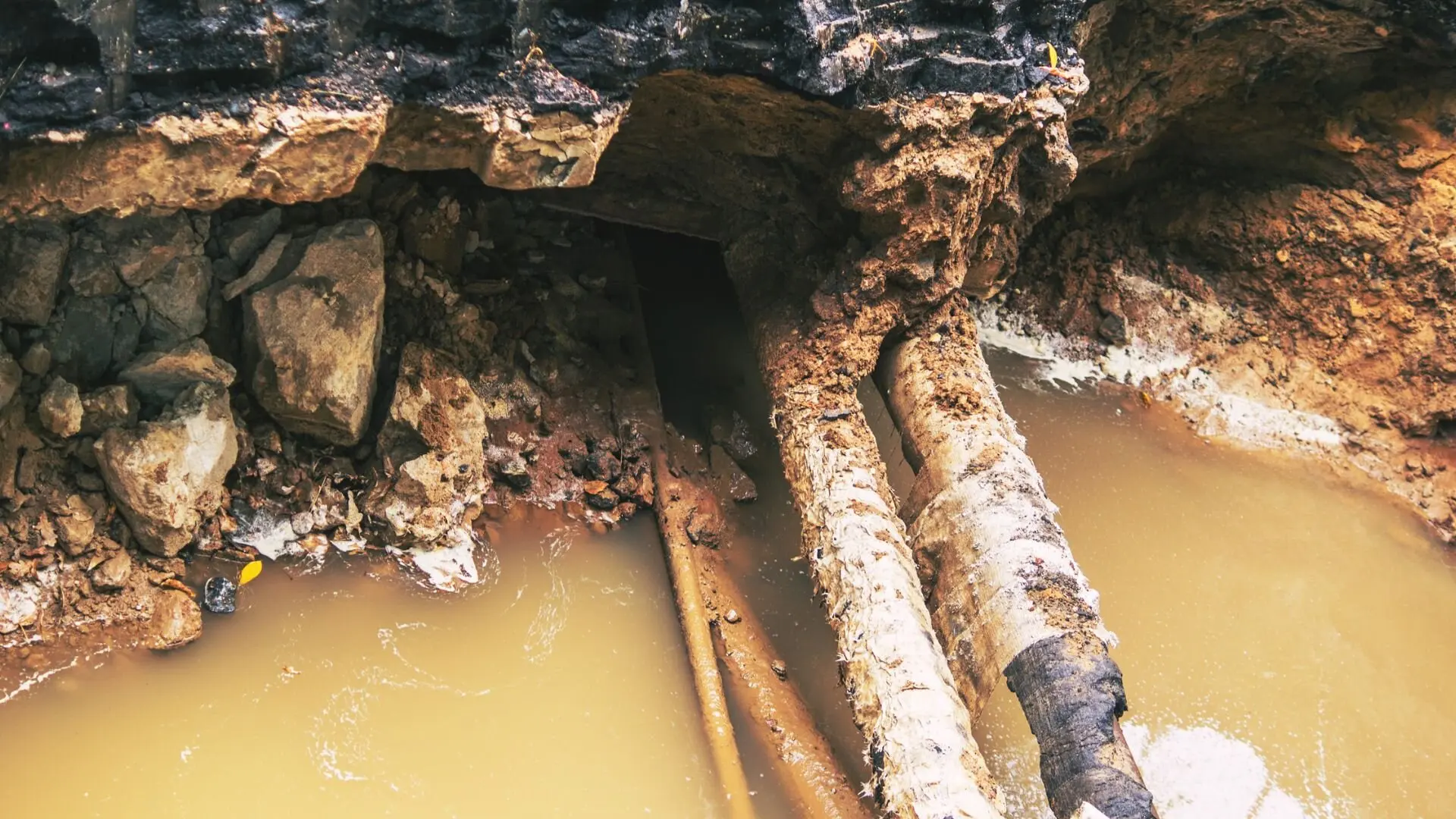How to Handle a Burst Pipe: Essential Steps for Immediate Action
How to Handle a Burst Pipe: Essential Steps for Immediate Action
Blog Article
Stopping Ruptured Pipeline: Vital Tips to Safeguard Your Pipes
Preventing ruptured pipes is a vital issue for property owners, especially throughout cooler months when the risk of freezing is increased. Implementing calculated actions such as proper insulation, regular assessments, and keeping constant interior temperatures can considerably reduce the chance of pipe failure.
Understand Pipe Vulnerabilities
Recognizing pipeline vulnerabilities is vital for reliable plumbing maintenance and stopping costly damages. Several aspects add to the susceptibility of pipelines to bursts, including product composition, age, and environmental conditions. Older pipes, especially those made from galvanized steel or polybutylene, commonly break down with time, bring about raised risk of leaks and tears.
Temperature level changes can also substantially influence pipeline honesty. In cooler climates, water caught in pipelines can freeze, expanding and exerting pressure on the pipe walls, which might ultimately bring about a ruptured. Moreover, high water pressure can stress pipes, especially at bends and joints, enhancing the possibility of failing.

Insulate Pipeline Appropriately
Appropriate insulation of pipes is crucial for preventing freezing and succeeding bursts throughout chilly weather condition (burst pipe). Insulating your plumbing system successfully safeguards against temperature drops that can result in costly damage. Begin by identifying prone areas where pipes are exposed to outdoor temperature levels, such as cellars, attics, and exterior wall surfaces
Use foam pipe insulation sleeves or wrap insulation tape around these locations to supply a protective barrier. Guarantee that all sections of the pipelines, particularly those with restricted heat direct exposure, obtain sufficient insulation. Pay special attention to installations and joints, as these are extra susceptible to freezing.
When protecting, it's vital to select materials that meet neighborhood building regulations and are appropriate for the certain atmosphere. Fiberglass insulation is commonly suggested for its thermal resistance properties. Additionally, think about making use of warm cable televisions or tape in extreme conditions, which can be plugged in to give extra warmth
Routinely check insulated pipes for any indications of wear or damage, as compromised insulation can reduce its performance. By taking these positive measures, you considerably decrease the threat of pipeline bursts, making certain a reputable pipes system throughout the wintertime months.
Maintain Constant Temperature
A stable indoor temperature is necessary for protecting against burst pipes during the freezing months. When temperatures decrease, water within pipelines can ice up, creating and expanding pressure that may eventually create the pipes to ruptured.Using a programmable thermostat can aid take care of interior temperature levels properly, making certain that areas with pipes continue to be cozy also when the residence is empty.
This minor circulation of water can stop cold by minimizing stress within the pipes. By applying these methods, house owners can substantially lower the threat of pipe ruptureds and safeguard their pipes systems versus the harsh wintertime elements.
Consistently Inspect Pipes
Regular examinations of plumbing systems are critical for protecting against ruptured pipes and preserving total home stability. Regular checks permit house owners to identify prospective concerns imp source before they intensify right into expensive fixings or major water damages. During these evaluations, it is necessary to check out noticeable pipelines for signs of rust, leaks, or put on. Pay unique focus to locations prone to freezing, such as cellars, attic rooms, and exterior walls.
Furthermore, inspecting joints and connections is important, as these points are frequently at risk to leakages. House owners must likewise analyze water stress levels, as too much stress can stress the plumbing system and enhance the risk of pipeline bursts.
Take into consideration scheduling expert plumbing evaluations at least once a year, particularly before winter, to ensure your system is prepared for cooler temperature levels. By being proactive in your method, you can protect your home versus the turbulent and pricey consequences of ruptured pipelines.
Know Emergency Treatments
Understanding emergency procedures is vital for each house owner, specifically after conducting normal plumbing inspections. Being prepared for a plumbing emergency situation can dramatically reduce damages and save costs. Find your major water shut-off valve; it is typically located near the water meter or where the primary line enters your home. Familiarize yourself with its procedure, as shutting down the water system swiftly can prevent substantial flooding.
Following, keep essential tools handy. A plumbing emergency situation set need to include a wrench, bettor, and towels, along with a flashlight and a container for little leakages. In addition, consider read this article having the get in touch with info for a trusted plumbing technician readily available, should the circumstance rise beyond your control.
If you find a leakage or ruptured pipe, quickly turn off the supply of water and alert your plumber. Document the damages with pictures for insurance policy objectives. Understand the signs of potential plumbing issues, such as unusual water pressure fluctuations or damp places on walls
Eventually, positive understanding and quick activity are vital in taking care of pipes emergency situations, guaranteeing your home continues to be secured and lessening possible damages.

Verdict
Finally, avoiding click to find out more ruptured pipes necessitates a complex approach that consists of understanding pipeline vulnerabilities, correct insulation, maintaining constant interior temperatures, routine examinations, and understanding of emergency situation procedures. By carrying out these crucial strategies, the threat of plumbing failures can be significantly reduced, therefore making sure the long life and performance of the plumbing system. Proactive procedures not just safeguard versus possible damage but likewise add to general water preservation and the security of residential property.
In chillier environments, water trapped in pipes can ice up, applying and broadening stress on the pipeline walls, which may ultimately lead to a ruptured. When temperatures drop, water within pipes can freeze, increasing and creating pressure that may ultimately create the pipelines to burst. By executing these techniques, home owners can dramatically lower the risk of pipe ruptureds and secure their pipes systems against the severe wintertime components.

Report this page